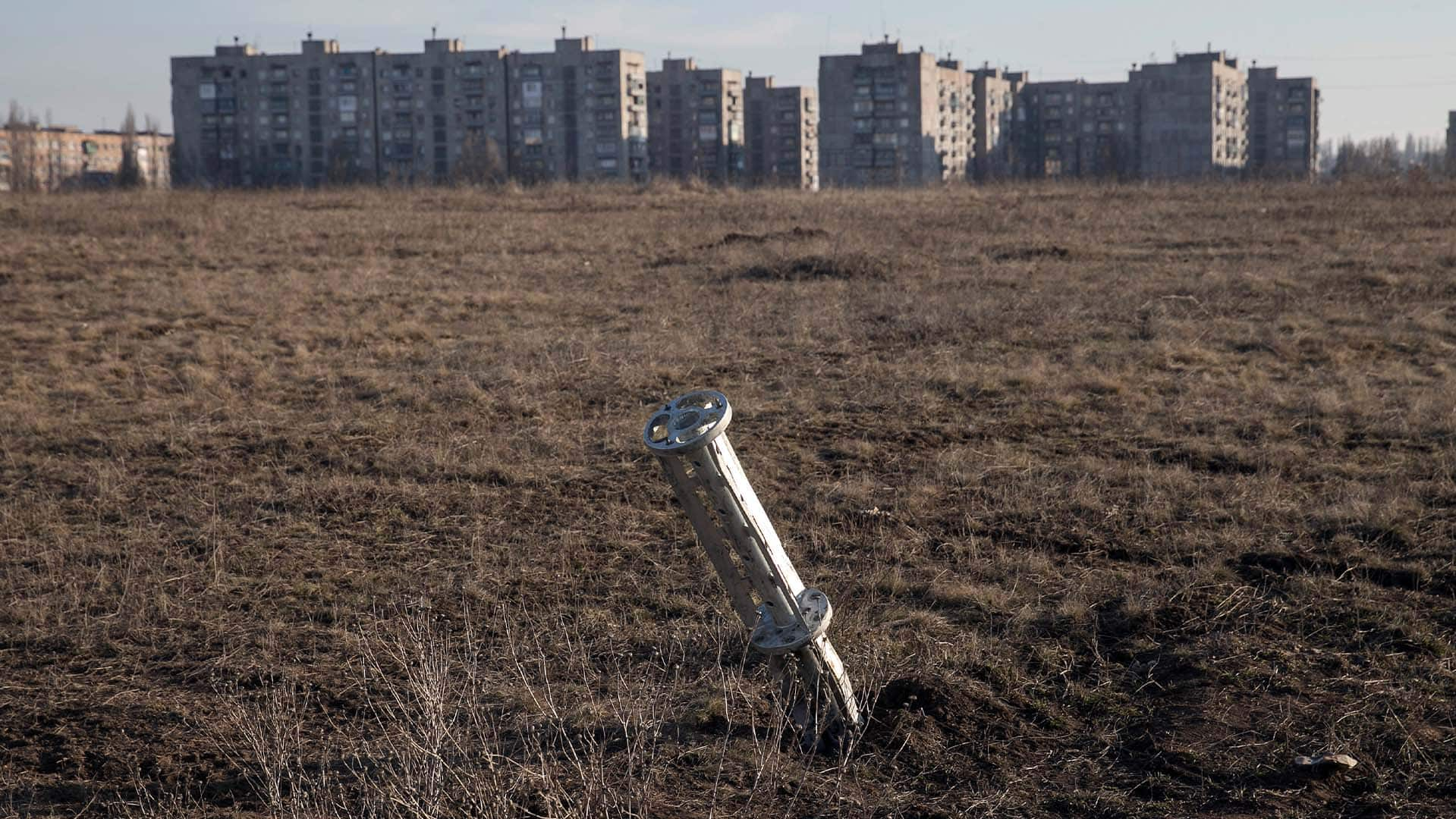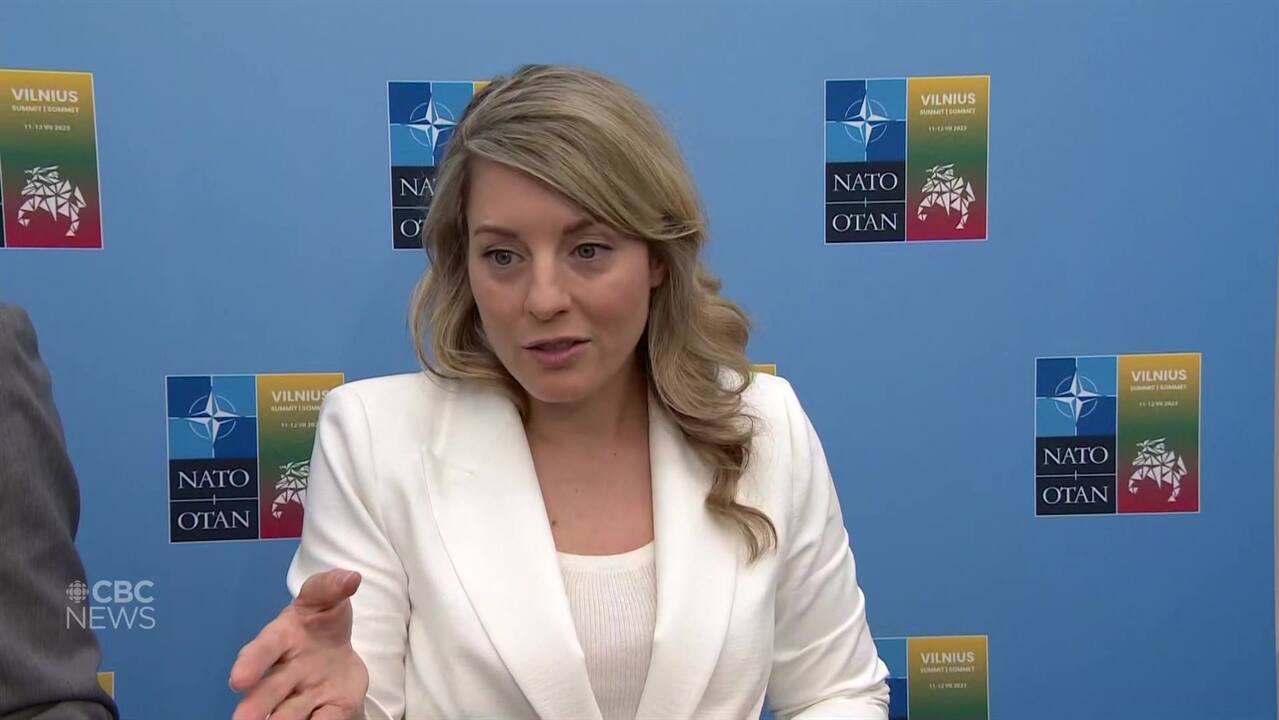ANALYSIS | Much of the world says they’re immoral. So why is Ukraine so keen on cluster bombs? | CBC News
Cluster munitions are responsible for the deaths of thousands of civilians and have been banned in more than 120 countries, but military experts say they would be an effective weapon for Ukraine’s army against Russian forces, which is why the United States has decided to provide them.
“There’s no question these things are very effective,” said Mark Cancian, a senior adviser with the International Security Program at the Center for Strategic and International Studies in Washington, D.C.
“It will be a useful increase in artillery effectiveness,” he said. “It’s not going to be a game changer, but in the end, it will make Ukraine virtually more effective.”
Ryan Brobst, a senior research analyst with the Center on Military and Political Power at the Foundation for Defence of Democracies in Washington, agreed. But, he said, “what would be a game changer is if Ukraine completely ran out of artillery, ammunition.”
“[This] allows several hundred thousand more artillery rounds to be available to them,” he said.
The decision by the U.S. last week to provide cluster munitions has been condemned by human rights groups, along with some NATO countries who signed the 2010 convention banning their use, production or stockpiling. The U.S. has not signed the convention.
A cluster munition is a bomb that opens in the air and releases smaller “bomblets” across a wide area. The bomblets are designed to take out tanks and equipment, as well as troops, hitting multiple targets at the same time.
Ukrainian President Volodymyr Zelenskyy says he knows there is division around cluster munitions — but he maintains his country needs them in its fight against invading forces, saying Russia ‘constantly’ uses the controversial explosive weapons on Ukraine’s territory.
‘Significant impact’
Michael Kofman, director of the Russia Studies Program at the Virginia-based Center for Naval Analyses, suggested in a series of Twitter posts that such weapons “could have a significant impact” for Ukraine’s counteroffensive and that despite the drawbacks, “unlocking this stockpile has important implications for the course of Ukraine’s offensive.”
“Without this ammunition, it is difficult to imagine this offensive taking place, he wrote.
Ukraine is in need of ammunition. The U.S. has been supplying, from its own stocks, traditional 155-mm howitzer munitions and has sent more than two million rounds to Ukraine. Allies across the globe have provided hundreds of thousands more since Russia invaded its neighbour on Feb. 24, 2022.

But, as noted by Cancian, the inventory of standard, high-explosive artillery shells is now very low.
“Although the United States continues to provide some shells as new production becomes available, the numbers are not sufficient to meet Ukraine’s artillery needs. Cluster munitions will fill that gap,” he recently wrote.
Ukraine’s counteroffensive against Russian troops is not going as rapidly as had been hoped, Cancian said. “They need a boost … and the United States has basically run out of regular artillery. This is what’s available.”
Ukraine wants cluster munitions because they are highly effective against area targets, such as infantry, artillery and vehicle convoys, he said.
Indeed, Cancian has pointed out that cluster munitions got the nickname “steel rain” because of their intense and widespread effects.
“So you get sort of a double benefit. You know, one is you get more artillery shells, which the other one is you get artillery shells that are more effective.”
Fewer rounds needed with cluster munitions
The rounds from cluster munitions have a higher lethality compared with conventional artillery rounds, Brobst said, and are particularly useful in clearing trenches.
“If you’re firing numerous submunitions, there’s a much higher chance that at least one of them is going to land in a trench,” he said.
Jack Watling and Justin Bronk, both senior research fellows at the Royal United Services Institute in London, recently wrote that cluster munitions would “greatly multiply the efficiency of artillery fire against entrenched troops.”
They pointed to U.S. army data that found that during the Vietnam War, the number of conventional high-explosive 155-mm rounds fired for each enemy soldier killed in combat was 13.6, compared with only 1.7 for cluster munition shells.
“When fired against Russian defensive fortifications in Ukraine, a conventional artillery shell has a very low probability of killing Russian troops unless it lands directly in a trench,” they wrote.
Cluster munitions, by contrast, spread 72 submunitions over a significant area, which “greatly increases the chances of multiple submunition blasts directly impacting troops in trenches, providing much greater lethal and suppression effects.”
Most significantly, giving Ukraine cluster munitions will mean it has to fire fewer total rounds for a given battlefield effect, “allowing it to sustain the fight for significantly longer,” Watling and Bronk wrote.
“This is vital given Russia’s current strategy of attempting to dig in and prolong the conflict.”
The United States has confirmed it will send cluster bombs to Ukraine. The highly effective, deadly weapons have been banned by more than 100 countries, including Canada because of the threat they pose to civilians. The U.S. underlines that Russia has already been using them against Ukraine in the war.
High dud rate
Yet in previous conflicts, cluster munitions have had a high dud rate — up to 40 per cent in some recent conflicts, according to the International Committee of the Red Cross. That means that thousands of the unexploded bomblets remained behind and killed and maimed civilians. Some estimates have suggested that upwards of 80,000 civilians have been killed.
Both Russia and Ukraine, who have not joined the cluster munitions treaty, have been accused of using cluster munitions during the war.
In a letter to U.S. President Joe Biden opposing his decision to send cluster munitions to Ukraine, the Cluster Munition Coalition reminded him that the weapons “are among the most harmful weapons to civilians.”

The munitions, the coalition said, were designed to disperse indiscriminately across a wide area and often fail to explode on initial use, “littering communities with unstable unexploded ordnance and causing devastating harm to civilians, and especially children, years after a conflict ends.”
“Any claims of potential tactical benefits of the transfer and subsequent use of cluster munitions by Ukraine in the defence of its territory dismisses both the substantial danger that cluster munitions pose to civilians, and the international consensus on their prohibition.”
Before Washington had decided to send the controversial weapons to Ukraine, Human Rights Watch said that the cluster munitions the U.S. is considering are more than 20 years old, scatter over a wide area and have a notoriously high failure rate, meaning they could remain deadly for years.
However, U.S. officials have insisted that the version of the munition that they will be sending has a reduced “dud rate,” or a rate of unexploded duds below 2.35 per cent.
Still, in an interview with CBC’s As It Happens, Daryl Kimball, executive director of the Arms Control Association based in Washington, questioned the reliability of the U.S. government’s data.
“These numbers come from the Pentagon. The Pentagon has not provided the studies, the data that we need to see to back up that assessment,” he said.
Foreign Affairs Minister Mélanie Joly says Canada ‘will continue to support Ukrainians in their fight’ against Russia, even if the country receives cluster munitions, which Canada has a long history of opposing.
“I would note that those people and organizations who we are allied with, who work in the fields to reduce war zones of unexploded ordnance, are finding that the failure rates of landmines and cluster munitions used are actually higher than advertised.”
But Cancian, with the Center for Strategic and International Studies, said even if the failure rate is double what U.S. officials are saying, the cluster munitions would still be “pretty damn effective.”
The nub of the Ukrainian argument for using them, he said, is that every day the war goes on, Ukrainian civilians are killed, and they have to weigh that with the risk of dud weapons killing their own population.
“And they’ve said, ‘We’ll take that risk given the suffering we’ve experienced every day of this war.’ I think that’s a reasonable trade-off.”
For all the latest World News Click Here
For the latest news and updates, follow us on Google News.



